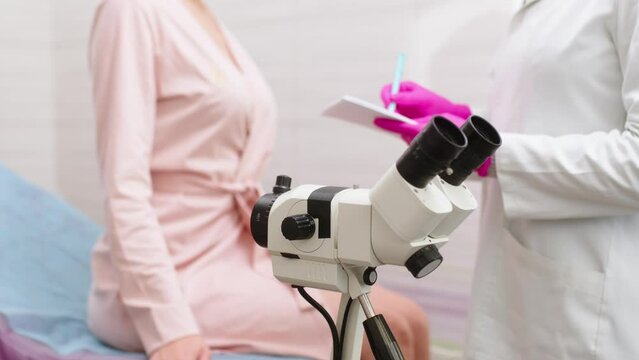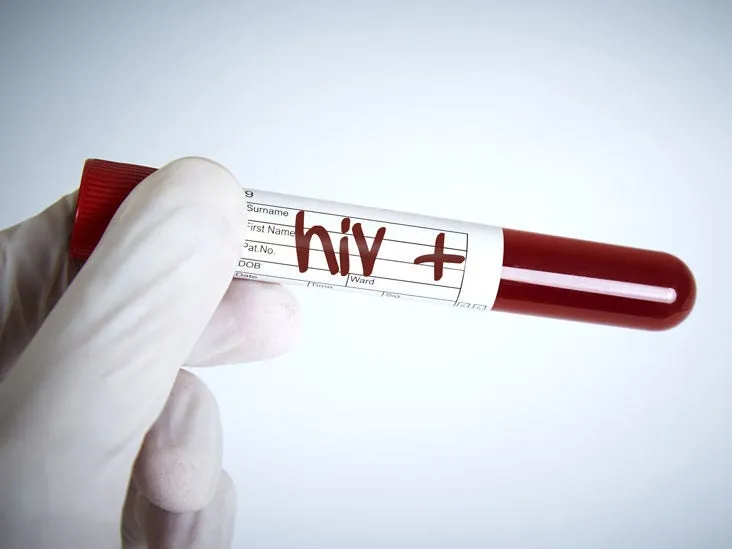At Local MD, we believe that robust, proactive women’s Reproductive health care begins with effective gynecological screenings. These screenings act as a cornerstone in the early detection and prevention of many reproductive health issues—potentially life-changing and life-saving when done correctly and timely. In this comprehensive article, we explore why these screenings matter, what specific tests and screens are recommended, how they detect and prevent disease, and how we partner with patients to ensure optimal outcomes.
Why Gynecological Screenings Matter
Early detection is one of the most powerful tools in reproductive health. When conditions are caught before they progress, treatment is often easier, less invasive, more successful and less costly. For women’s reproductive health, this means cancers (such as cervical or ovarian), sexually transmitted infections (STIs), fibroids, endometriosis, uterine abnormalities and fertility-related disorders can often be caught earlier through appropriate screening.
Regular gynecological screenings also provide a critical opportunity for prevention and counselling—addressing lifestyle, reproductive planning, menopause preparations, and sexually-transmitted disease risks. In short, screenings are not just reactive—they are fundamentally proactive.
Moreover, authoritative guidelines for women’s preventive care emphasize periodic screening across a woman’s reproductive lifespan.
Key Screenings: What They Are and Why They Matter
Cervical Cancer Screening (Pap Smear & HPV Testing)
One of the most well-established gynecological screening tests is the Papanicolaou (Pap) smear, sometimes in combination with human papilloma virus (HPV) testing. This test examines cells from the cervix to identify precancerous changes or early cancerous lesions.
Guidelines recommend:
-
Begin cervical cancer screening at age 21 for women of average risk.
-
From ages 21-29: Pap smear every 3 years (if previous tests normal).
-
Ages 30-65: Either Pap alone every 3 years or cotesting (Pap + HPV) every 5 years for average-risk individuals.
This screening is critical because cervical cancer, when caught early, has much better outcomes.
Pelvic Examination & Physical Assessment
The pelvic exam typically includes external inspection of the genital area, speculum exam of the vagina/cervix, and bimanual palpation of the uterus, ovaries and adnexa. The aim is to identify abnormalities such as masses, fibroids, ovarian cysts or signs of infections.
While the value of routine pelvic exams in asymptomatic women has been debated (especially for cancers difficult to detect via this method) it remains an important part of the dialogue between patient and provider—especially when tailored to individual risk.
Sexually Transmitted Infection (STI) Screening
STI screening is a vital component of reproductive health care. Many infections (e.g., chlamydia, gonorrhea, syphilis, HIV) may be asymptomatic yet result in long-term reproductive consequences (infertility, pelvic inflammatory disease, ectopic pregnancy). Screening allows for early detection, treatment and prevention of sequelae.
Breast & Uterine-Related Screenings
Although strictly reproductive organs differ, screenings such as clinical breast exams, mammography when indicated, uterine health evaluations, and assessments of menopausal transitions are relevant to the broad domain of gynecologic health. These should be integrated into comprehensive care.
Risk-Based & Age-Specific Screenings
Beyond the baseline screenings, many women require tailored assessments depending on risk factors (family history, genetics, personal history of disease, lifestyle). For example, women with BRCA gene mutations may require more frequent breast/ovarian cancer screening. Women with abnormal menses may need early evaluation for uterine or ovarian pathology. These are best discussed with your provider.
How Screenings Contribute to Early Detection & Prevention
Identifying Precancerous and Early Cancerous Changes
Gynecologic screenings aim to find disease before symptoms appear—or when disease is at a stage where treatment is far more effective. For example, detecting abnormal cervical cells via a Pap smear means intervention can prevent progression to invasive cervical cancer. This is classic screening success.
Preventing Complications from Infections & Reproductive Disorders
Screening for STIs prevents progression to pelvic inflammatory disease which can damage fallopian tubes, cause infertility or chronic pelvic pain. Similarly, routine well-woman visits may expose early signs of fibroids, endometriosis, or ovarian masses—conditions that, if caught early, may be managed conservatively rather than needing extensive surgery.
Empowering Reproductive Planning & Life-Stage Transitions
Early detection via screenings enables women to plan for fertility, manage transitions such as perimenopause or menopause, and address underlying hormonal or anatomic issues proactively rather than reactively. In this way, these visits support life-long reproductive health, not just episodic care.
Improving Outcomes & Reducing Burden
Research indicates that when screenings detect disease early, outcomes improve, resources required for treatment decrease, and quality of life is preserved. For women’s health, fewer complications, less aggressive interventions, and improved reproductive outcomes follow from early detection.
Recommended Frequency & Practical Guidelines
At Local MD we adopt guidelines consistent with major professional bodies but emphasise personalisation based on risk, age, and individual health history. Key recommendations include:
-
Women aged 21-65: Ensure cervical cancer screening as per guidelines.
-
Women under 25 or young sexually active women: STI screening annually if at risk.
-
Annual “well-woman” visits that incorporate risk assessment, general health screening, reproductive health discussion—even if a full pelvic exam isn’t done every year.
-
Discuss pelvic exams and imaging protocols based on individual risk (family history of ovarian cancer, symptoms, genetic panels).
-
Transitioning into menopause: screenings for uterine, bone health, hormonal balance and sexually related outcomes become more significant.
-
Preconception or fertility planning: early-cycle screening, investigations into uterine, ovarian and tubal health.
We also emphasise lifestyle and holistic factors during these visits: nutrition, physical activity, smoking cessation, healthy weight, sexual health, mental health—all of which influence reproductive health and screening outcomes.
Common Conditions Detected Through Screenings and Their Significance
Cervical Cancer & Precancerous Lesions
Cervical cancer remains preventable in many cases given effective screening and HPV vaccination. Abnormal Pap or HPV tests lead to colposcopy and treatment of precancerous lesions—reducing progression risk significantly. Early‐stage cervical cancer treatment has favorable prognosis.
Ovarian, Uterine & Vulvar Cancers
While effective screening for ovarian cancer remains a challenge, symptoms plus imaging or risk‐based screening can help earlier detection. Pelvic exams and appropriate imaging help identify masses early. Uterine cancer often presents with symptoms such as abnormal bleeding; but risk assessment during well-woman visits helps identify early signs.
Fibroids, Endometriosis, Ovarian Cysts
These common gynecologic conditions may be asymptomatic early on. Through pelvic exam, imaging-referral and discussion of symptoms (pain, heavy bleeding, infertility), they can be managed more efficiently when caught earlier.
Sexually Transmitted Infections & Related Sequelae
STIs like chlamydia and gonorrhea often go undetected. Routine screening allows prompt treatment, preventing pelvic inflammatory disease (PID), infertility, ectopic pregnancy, chronic pelvic pain.
Menopause-Related Issues & Post-Reproductive Health
As women age, screenings shift to include bone density (osteoporosis risk), hormonal screening, uterine atrophy, and cardiovascular risk factors. Early detection of changes in the reproductive axis helps maintain health and quality of life.
Challenges & Considerations in Screening
Adherence & Access to Care
Despite guidelines, many women forego routine gynecologic screenings due to cost, access barriers, low awareness or discomfort. Ensuring access and emphasising education around the meaning and benefits of screenings is critical.
Proper Risk Stratification & Personalised Care
One-size-fits-all screening intervals may not serve women with elevated risk. Genetic predisposition, family history, lifestyle factors, previous abnormal results—all require tailored screening strategies.
Balancing Benefits & Harms
While screening has major benefits, false positives, over-diagnosis and unnecessary interventions are risks. For example, the role of routine pelvic examinations in asymptomatic women has been debated. At Local MD we emphasise shared-decision making—where the patient is informed of benefits, risks and alternatives.
Staying Updated with Evolving Guidelines
Screening guidelines evolve as evidence advances. For example, the intervals for cervical screening and the introduction of HPV cotesting. Staying current ensures our patients benefit from best practices.
Ensuring Equity in Reproductive Health Screenings
Disparities exist in access to screening services, particularly in underserved populations. It’s essential to ensure that reproductive health screenings are available, affordable and culturally competent for all women.
How Local MD Supports Your Gynecologic Screening Journey
At Local MD we frame gynecologic screenings as an integral part of whole-woman care, not just isolated tests. Here’s how we partner with you:
-
We begin with a comprehensive risk assessment: personal health history, family history, lifestyle, reproductive goals and concerns.
-
We recommend appropriate screening schedules based on age, risk and current guidelines.
-
We provide education and counselling: what each screening means, what to expect, how results are interpreted.
-
We work in an environment of shared decision-making, ensuring you are comfortable with the process and have voice in scheduling, diagnostic follow-up and lifestyle measures.
-
We ensure follow-up care is timely: abnormal screening results trigger coordinated care, referrals, further diagnostics and a clear plan of action.
-
We emphasise prevention and wellness: beyond screenings, we address lifestyle, nutrition, sexual health, fertility planning and menopause care.
Case Scenario: Early Detection in Practice
Consider a 32-year-old woman with no symptoms who attends her routine visit. Her history reveals intermittent heavy menstrual bleeding and a family history of uterine fibroids. Through her screening visit we perform a Pap/HPV test (normal), discuss STI risk (low), and, based on her bleeding history and family history, decide to perform an ultrasound. The ultrasound reveals a small uterine fibroid and early-stage endometrial thickening. Because we caught this early, we arrange monitoring, lifestyle counselling (weight, iron/bleeding management), and avoid surgical intervention for the time being. Over the next year, her heavy bleeding is managed conservatively. This scenario illustrates how gynecologic screenings lead to early detection before serious complications such as anemia or infertility arise.
Conclusion: Ensuring Lifelong Reproductive Health
In our view at Local MD, gynecological screenings are not optional but essential pillars of reproductive health. They facilitate early detection of disease, meaningful prevention, timely intervention and improved outcomes for women at every age. By integrating these screenings into regular care, tailoring to each woman’s risk, and partnering on lifestyle, wellness and reproductive goals, we help women live their healthiest lives.
If you’re uncertain about when to schedule your next screening—or which tests are right for you—we encourage you to reach out, discuss your risk profile, and take proactive steps. Your reproductive health is an investment, not an after-thought.






